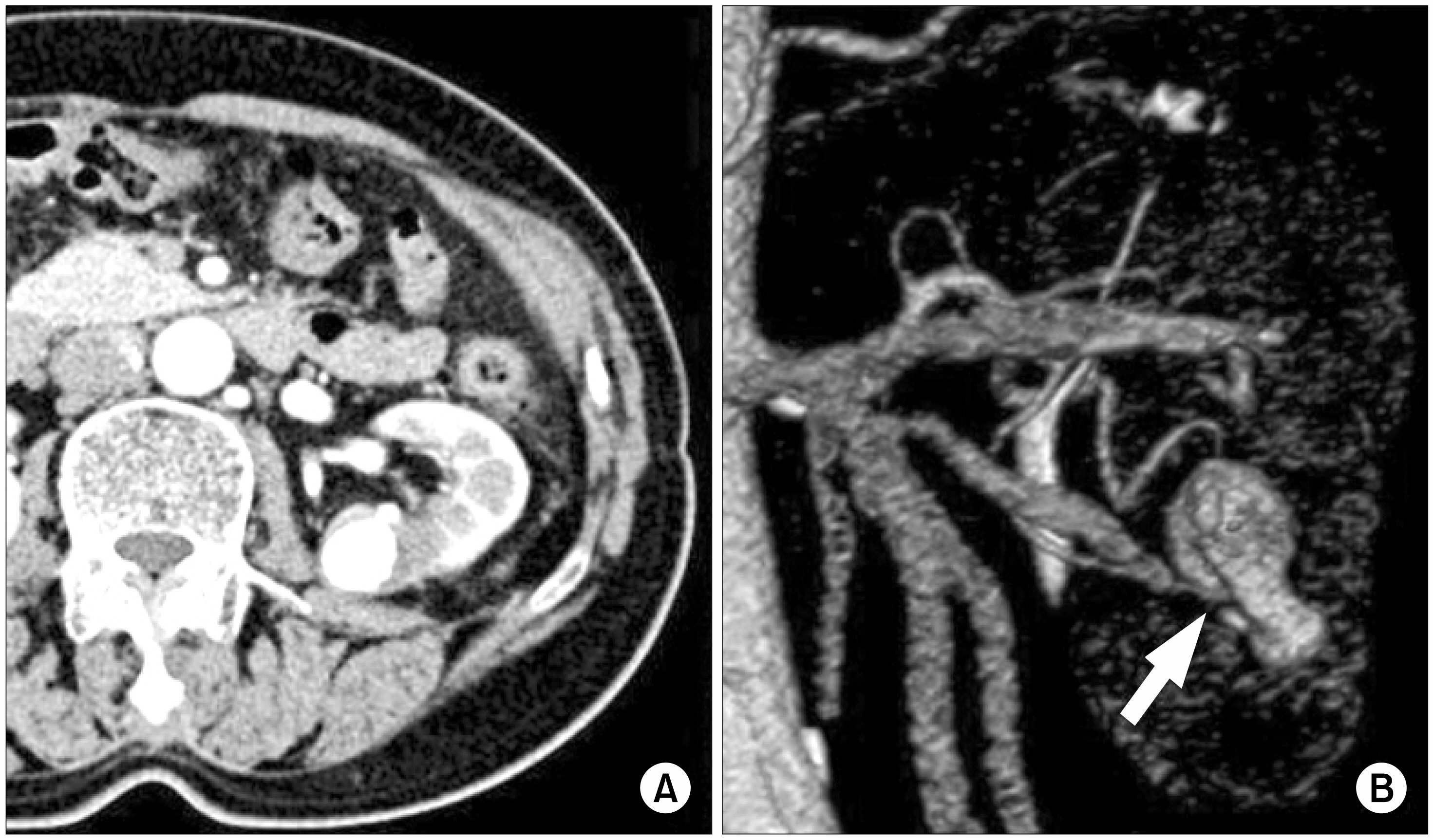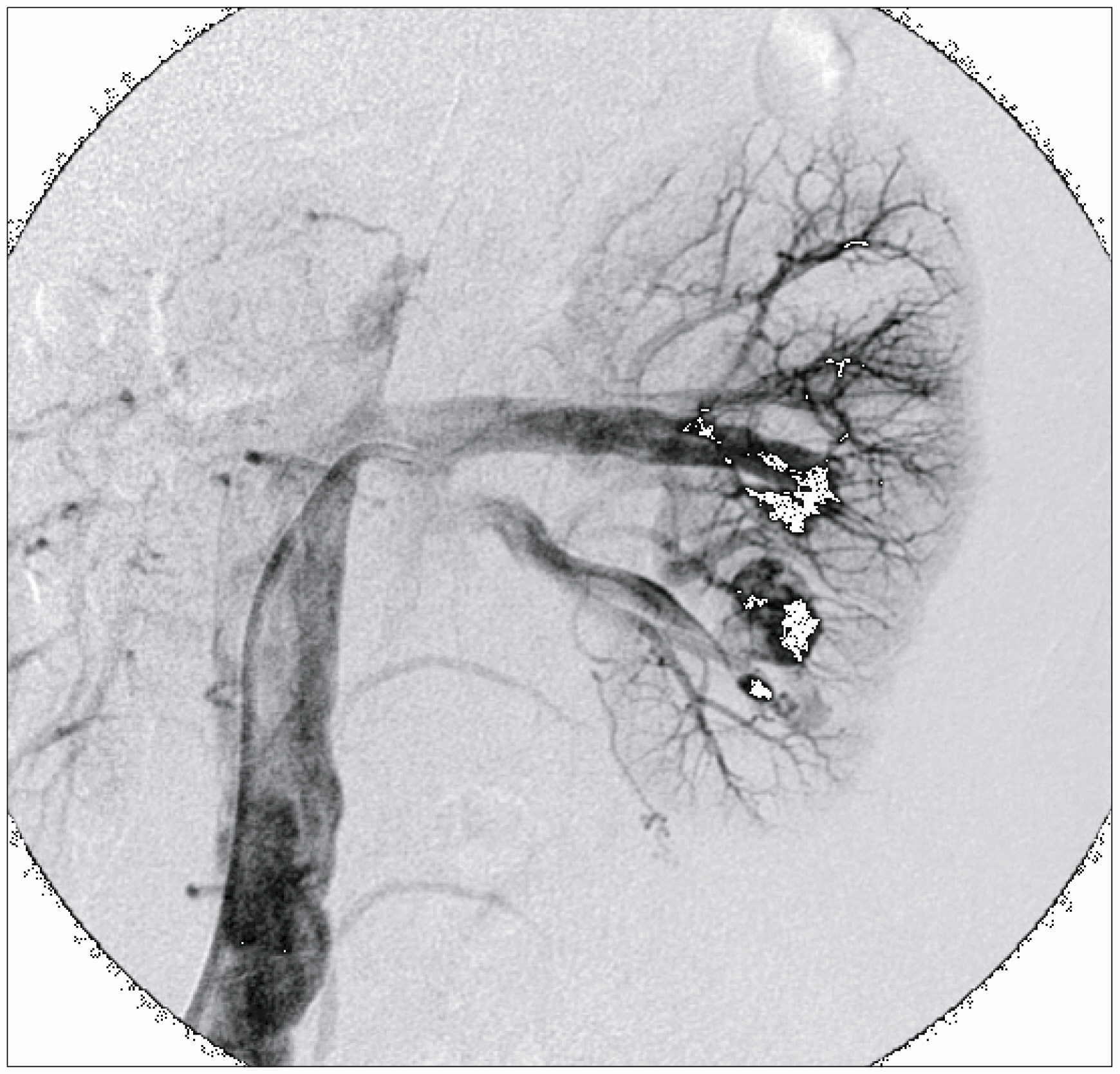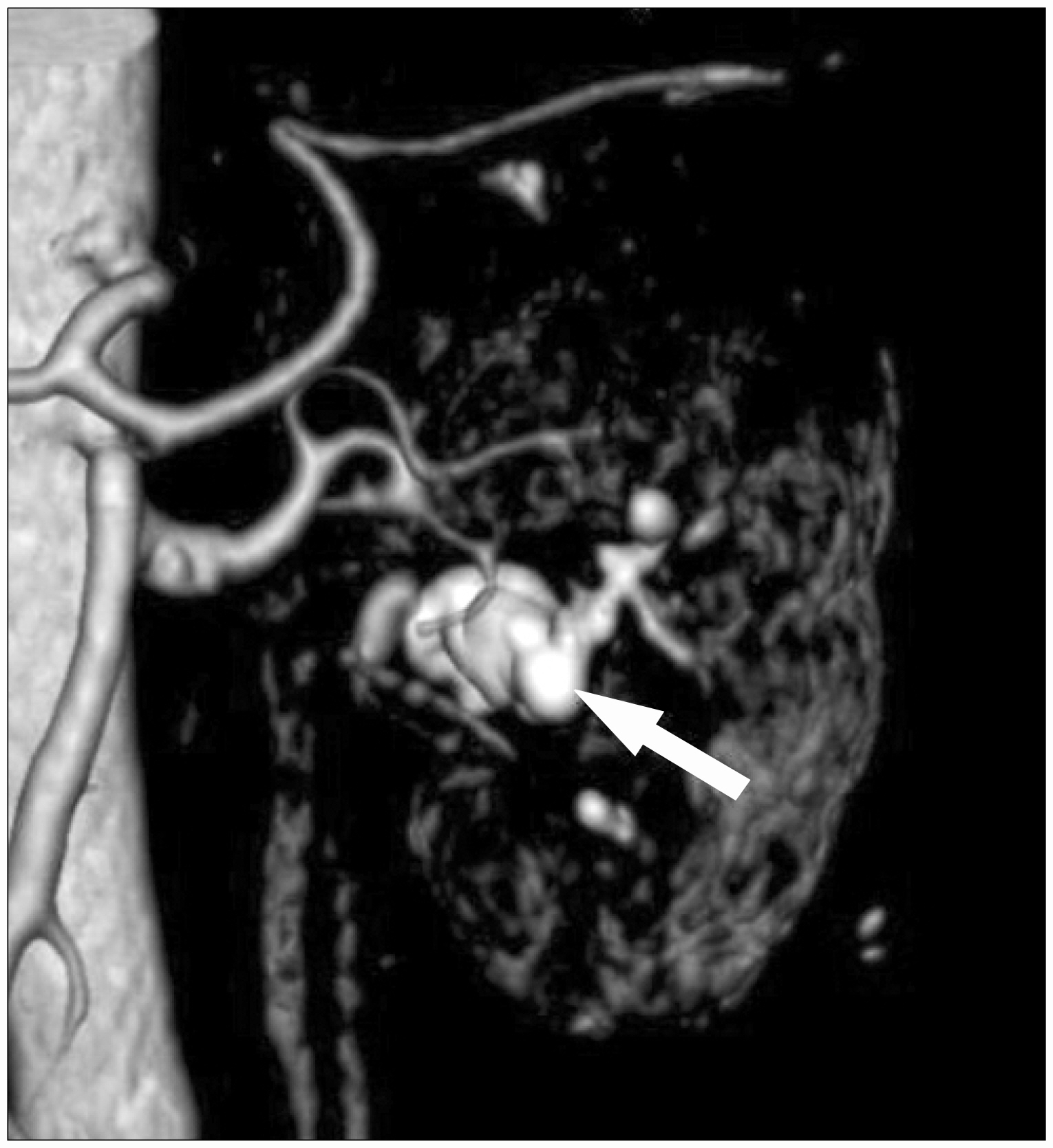Korean J Urol.
2007 Jun;48(6):659-662. 10.4111/kju.2007.48.6.659.
Percutaneous Embolization of Renal Artery Pseudoaneurysm after Laparoscopic Partial Nephrectomy for Renal Cell Carcinoma
- Affiliations
-
- 1Department of Urology, College of Medicine, The Catholic University of Korea, Seoul, Korea. tkhwang@catholic.ac.kr
- 2Department of Radiology, College of Medicine, The Catholic University of Korea, Seoul, Korea.
- KMID: 1885551
- DOI: http://doi.org/10.4111/kju.2007.48.6.659
Abstract
- Currently, partial nephrectomy for patients with malignant renal tumors has become the procedure of choice for elective indications. Attempts have been made to use minimally invasive endoscopic procedures to replace the standard open partial nephrectomy. Laparoscopic partial nephrectomy can be technically challenging and be associated with vascular complications such as pseudoaneurysm. We report here on a case of renal artery pseudoaneurysm that occurred after laproscopic partial nephrectomy for renal cell carcinoma treated by percutaneous selective angioembolization.
Keyword
Figure
Reference
-
References
1. Swana HS, Cohn SM, Burns GA, Egglin TK. Renal artery pseudoaneurysm after blunt abdominal trauma: case report and literature review. J Trauma. 1996; 40:459–61.2. Dodd GD III, Tublin ME, Shah A, Zajko AB. Imaging of vascular complications associated with renal transplants. AJR Am J Roentgenol. 1991; 157:449–59.3. Kessaris DN, Bellman GC, Pardalidis NP, Smith AG. Management of hemorrhage after percutaneous renal surgery. J Urol. 1995; 153:604–8.
Article4. Albani JM, Novick AC. Renal artery pseudoaneurysm after partial nephrectomy: three case reports and a literature review. Urology. 2003; 62:227–31.
Article5. Moore CJ, Rozen SM, Fishman EK. Two cases of pseudoaneurysm of the renal artery following laparoscopic partial nephrectomy for renal cell carcinoma: CT angiographic evaluation. Emerg Radiol. 2004; 10:193–6.
Article6. Wright JL, Porter JR. Renal artery pseudoaneurysm after laparoscopic partial nephrectomy. Urology. 2005; 66:1109.
Article7. Negoro H, Kawakita M, Koda Y. Renal artery pseudoaneurysm after laparoscopic partial nephrectomy for renal cell carcinoma in a solitary kidney. Int J Urol. 2005; 12:683–5.
Article8. Orvieto MA, Chien GW, Laven B, Rapp DE, Sokoloff MH, Shalhav AL. Eliminating knot tying during warm ischemia time for laparoscopic partial nephrectomy. J Urol. 2004; 172:2292–5.
Article9. Lee RS, Porter JR. Traumatic renal artery pseudoaneurysm: diagnosis and management techniques. J Trauma. 2003; 55:972–8.
Article10. Klein GE, Szolar DH, Breinl E, Raith J, Schreyer HH. Endovascular treatment of renal artery aneurysms with conventional non-detachable microcoils and Guglielmi detachable coils. Br J Urol. 1997; 79:852–60.
Article
- Full Text Links
- Actions
-
Cited
- CITED
-
- Close
- Share
- Similar articles
-
- Spontaneous Treatment of Renal Artery Pseudoaneurysm after Partial Nephrectomy: A Case Report
- Glued Angiocatheter: A Rare Complication of Intrarenal Pseudoaneurysm Glue Angioembolization
- A Case of Prenephrectomy Renal Artery Embolization for Renal Cell Carcinoma.
- Three cases of Renal Arterial Embolization and Nephrectomy in Renal cell Carcinoma
- Renal Artery Embolization Using a New Liquid Embolic Material Obtained by Partial Hydrolysis of Polyvinyl Acetate (Embol):Initial Experience in Six Patients





